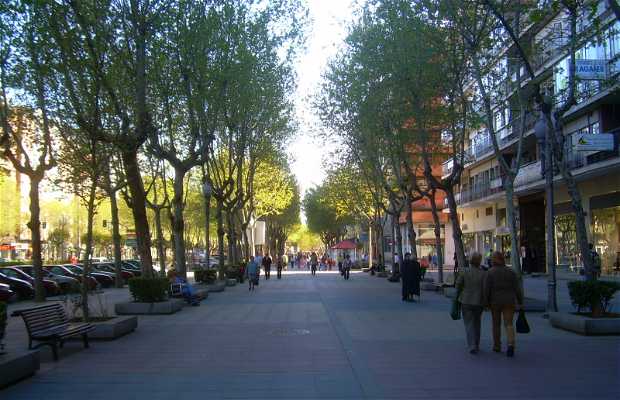Inma Gonzalez Burguillo
On the walk you can also see churches and congregation buildings, all important steps for their Easter
En el paseo también se pueden ver iglesias y edificios de congregaciones
Desde la salida de la calle Miguel Iscar en pleno centro de Valladolid hasta prácticamente salir de la ciudad, el Paseo Zorrilla está considerada como la arteria principal de la ciudad. En él se pueden ver pasar los siglos de historia a medida que se avanza, desde la plaza Zorrilla, se puede visitar el preludio del campo grande o como muchos lo llaman, nuestro particular Retiro.
Si bien la plaza no es muy antigua, desde ella se puede conocer el primer edificio que contó con ascensor en nuestra ciudad o el edificio por el que tanta polémica se ha generado con el anterior consistorio debido a su expansión ilegal en altura y su modificación. El edificio de caballería, también presidente la plaza, único en su especie por el tipo de piedra con el que está construido y que ofrece unos tonos amarillentos impresionantes. Avanzando ya en el paseo, edificios de los años 50 y 60 del siglo pasado en los que la gente más pudiente de Valladolid comenzó a asentarse, a orillas del río Pisuerga, previa expansión de la ciudad más allá de este en los nuevos barrios. En el paseo también se pueden ver iglesias y edificios de congregaciones, todas ellas importantes en semana santa por sus pasos.
El Corte Inglés de Paseo Zorrilla, lo que sería comparable a nuestro nivel con el del Paseo de la Castellana Madrileño, se encuentra a mitad de camino y un poco más adelante el edificio del antiguo matadero, reformado y convertido en un centro cultural para los jóvenes de la ciudad. A partir de aquí se aprecia otra expansión, edificios de mas allá de los años 70 y 80 que culminan en el nuevo barrio de Covaresa, que pone el ribete a la gran calle y a la ciudad en si.
Since the departure of Miguel Iscar Street in the heart of Valladolid to practically leave the city, Paseo Zorrilla is considered the main artery of the city. In it can be seen passing centuries of history as it progresses from the Zorrilla Square, you can visit the prelude to the big field or as many call it, our particular Retiro. While the square is not very old, since it could be found the first building had a lift in our city or building for which so much controversy has been generated with the previous session due to its illegal expansion in height and modification. The building cavalry, chairman Square, unique in its kind for the type of stone with which it is built and offers stunning beige tones. Moving forward and on the promenade, buildings from the 50s and 60s of the last century where the richest people of Valladolid began to settle on the banks of the river Pisuerga, after expansion of the city beyond this in the new quarters. On the walk you can also see churches and congregation buildings, all of them important in Easter for his steps. The English Court of Paseo Zorrilla, which would be comparable to our level in the Paseo de la Madrid Castellana, is halfway and a little later the building of the former slaughterhouse, renovated and converted into a cultural center for young people from the city. From here another expansion, buildings beyond the 70s and 80s culminating in the new district of Covaresa, which puts edging to the big street and the city itself is appreciated.

